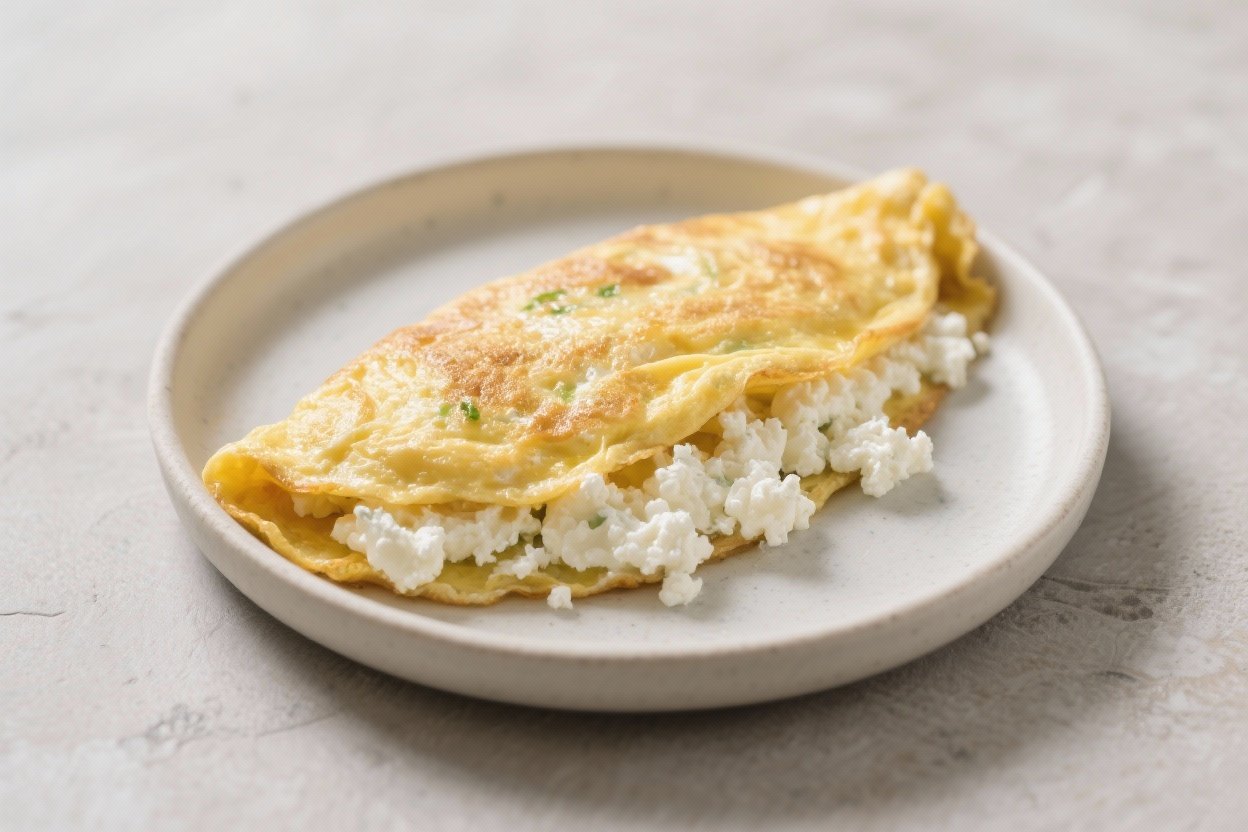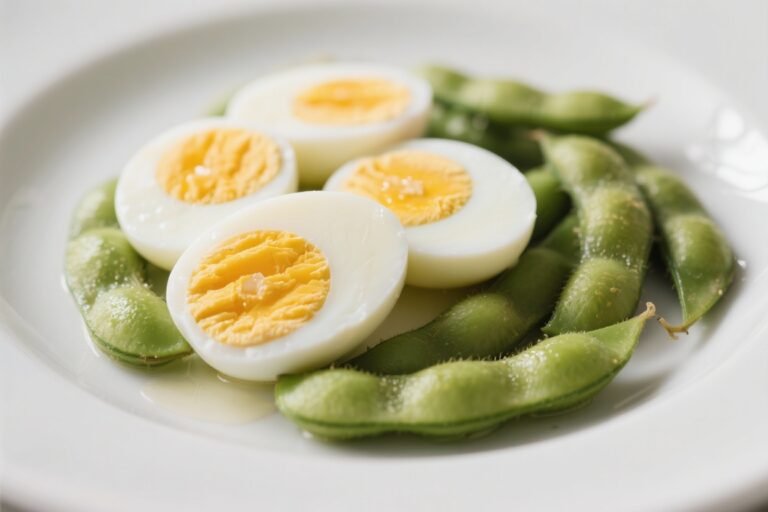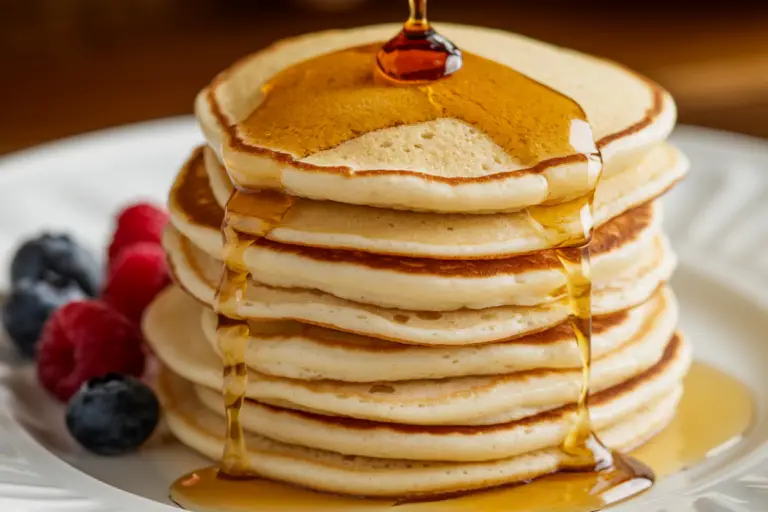Cottage Cheese Omelette: The 10-Minute Protein Powerhouse You’ll Actually Crave
You want breakfasts that make you feel like a superhero without cooking like a chef. This Cottage Cheese Omelette hits that sweet spot: embarrassingly easy, wildly satisfying, and suspiciously high in protein. The texture?
Fluffy with creamy pockets that melt into the eggs like a secret sauce. The taste? Savory, clean, and customizable—like a blank canvas that already tastes great.
If you can whisk, you can win.
📖 Get Access to 50+ Printable Smoothie Recipes Instantly! 🖨️
Boost your health with delicious smoothies! These easy-to-follow printable recipe eBooks are perfect for detoxing, fitness goals, and tasty plant-based living. Available for instant download on Etsy! 🌿✨
Why This Recipe Works
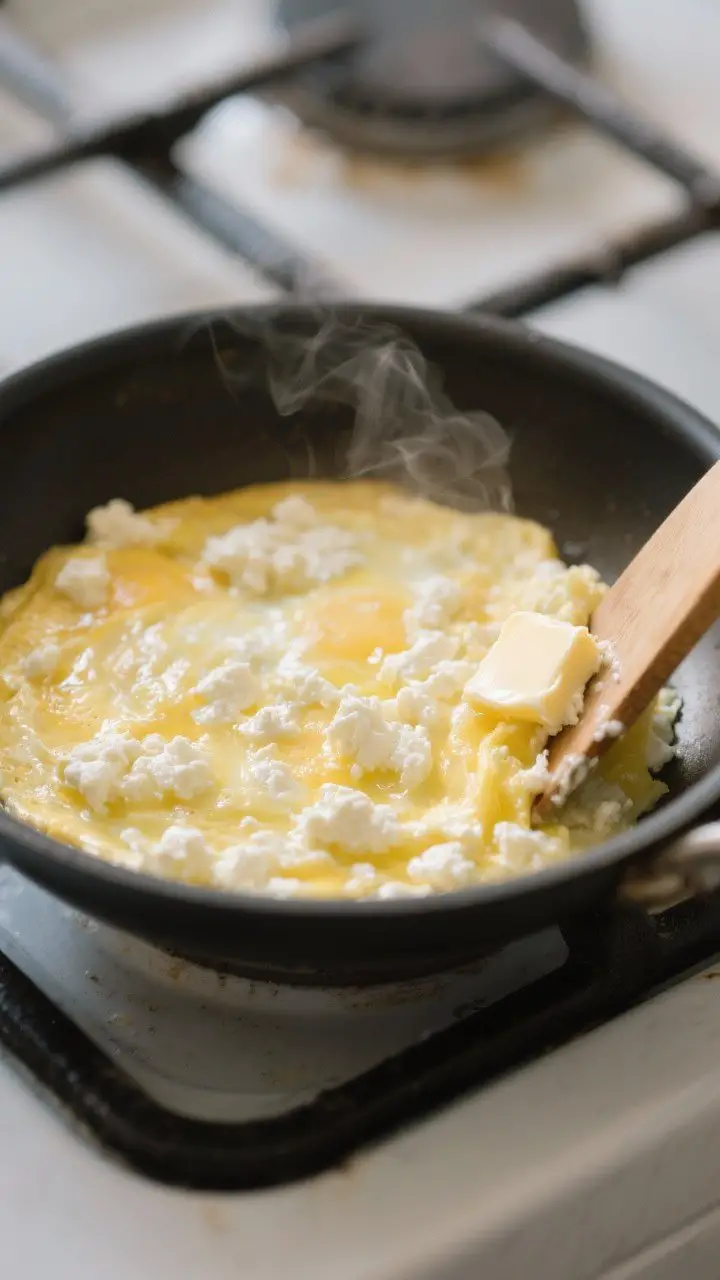
This omelette uses cottage cheese to do two things regular omelettes struggle with: more protein and more moisture without extra fat. The curds soften as they heat, creating creamy pockets that keep the eggs tender—no dry, rubbery disaster. The slight tang from the cottage cheese balances rich eggs and pairs beautifully with herbs and veggies.
Instead of heavy cream or a mountain of cheese, cottage cheese lightens the texture while boosting fullness.
It’s also forgiving to cook; even if your flip isn’t Instagram-perfect, it still tastes like you meant it. Plus, it’s budget-friendly, quick, and endlessly tweakable for whatever’s in your fridge.
Shopping List – Ingredients
- Eggs (2–3 large) – the base of your omelette.
- Cottage cheese (1/3 to 1/2 cup) – small or large curd, your call.
- Butter or olive oil (1 tablespoon) – for the pan and flavor.
- Salt and black pepper – to taste.
- Fresh herbs (chives, parsley, dill) – optional but game-changing.
- Veggies (spinach, mushrooms, tomatoes, onions, peppers) – pre-cooked or quick-sautéed.
- Extras (optional): shredded cheddar, feta, smoked salmon, ham, chili flakes, hot sauce, lemon zest.
The Method – Instructions
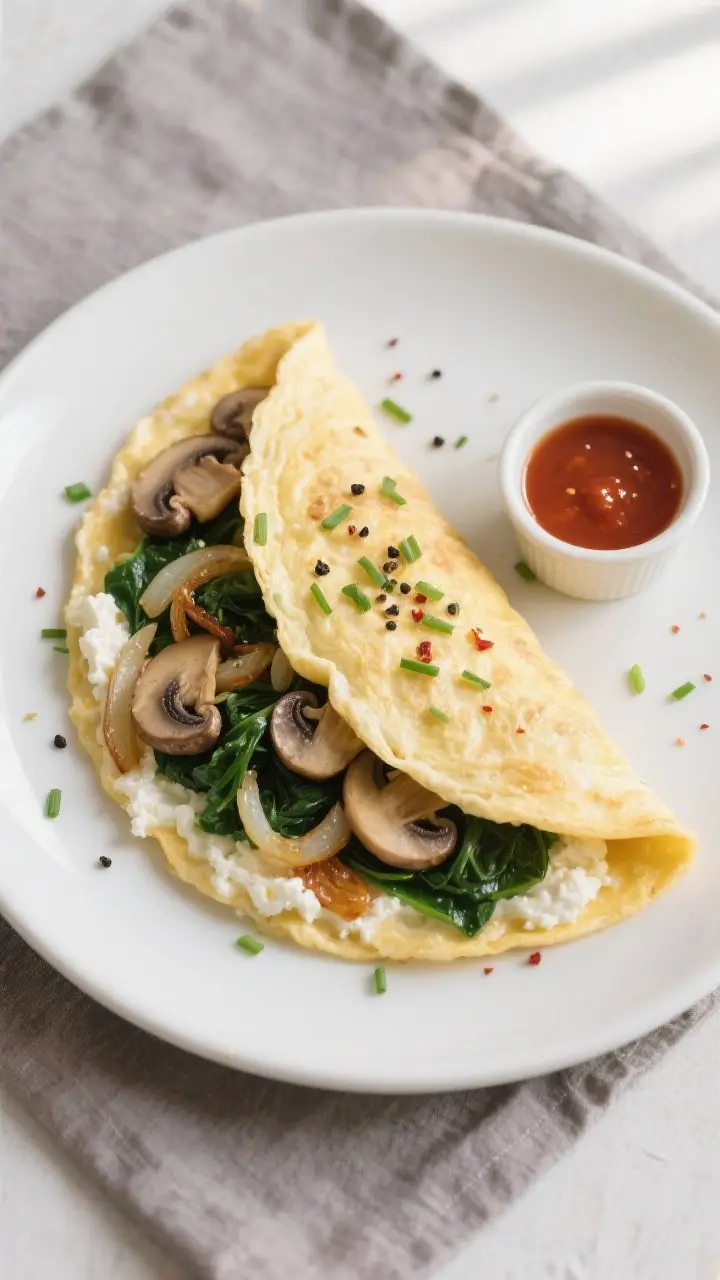
- Prep the fillings: If using veggies like mushrooms or onions, sauté them first in a separate pan with a little oil and a pinch of salt until softened. Wet fillings = soggy omelette, so cook off moisture.
- Whisk the eggs: Crack 2–3 eggs into a bowl.
Add a pinch of salt and pepper. Whisk just until the whites and yolks are mostly combined—no need to over-aerate.
- Add cottage cheese: Stir in 1/3–1/2 cup cottage cheese. You can fold it gently for chunks or whisk it smoother if you prefer a more uniform texture.
- Heat the pan: Place a nonstick skillet over medium heat.
Add butter or oil and let it coat the surface. The pan is ready when a drop of egg sizzles lightly (not aggressively).
- Pour and swirl: Add the egg-cottage cheese mixture. Tilt the pan to spread it evenly.
Let it sit undisturbed for 20–30 seconds until the edges begin to set.
- Soft scramble the center: Using a spatula, gently pull set edges toward the center, letting uncooked egg flow to the outer edges. Do this 2–3 times for an even, custardy base.
- Add fillings: Scatter your pre-cooked veggies, herbs, and any extras over one half. Keep it modest; an overstuffed omelette folds like a wet newspaper.
- Lower heat and set: Reduce heat to low.
Cover the pan for 30–60 seconds to gently steam and set the top. This keeps the inside creamy without browning the bottom.
- Fold and finish: Slide your spatula under the bare half and fold over the filling. Cook another 15–30 seconds.
The goal: set but slightly custardy interior.
- Plate and season: Slide onto a warm plate. Top with extra herbs, a crack of pepper, and a few chili flakes if you like a little drama.
Preservation Guide
- Refrigeration: Store leftovers in an airtight container for up to 2 days. Reheat gently in a covered skillet over low heat or in the microwave at 50% power for 45–60 seconds.
- Meal prep tip: Mix eggs, cottage cheese, salt, and pepper in a jar and refrigerate up to 24 hours.
Cook fresh for best texture.
- Freezing: Not ideal. Eggs can turn spongy, and cottage cheese can separate. If you insist, wrap tightly and reheat in a covered skillet, but IMO fresh is worth the 10 minutes.
- Moisture control: If storing, avoid watery fillings like raw tomatoes; they weep and make the omelette soggy.
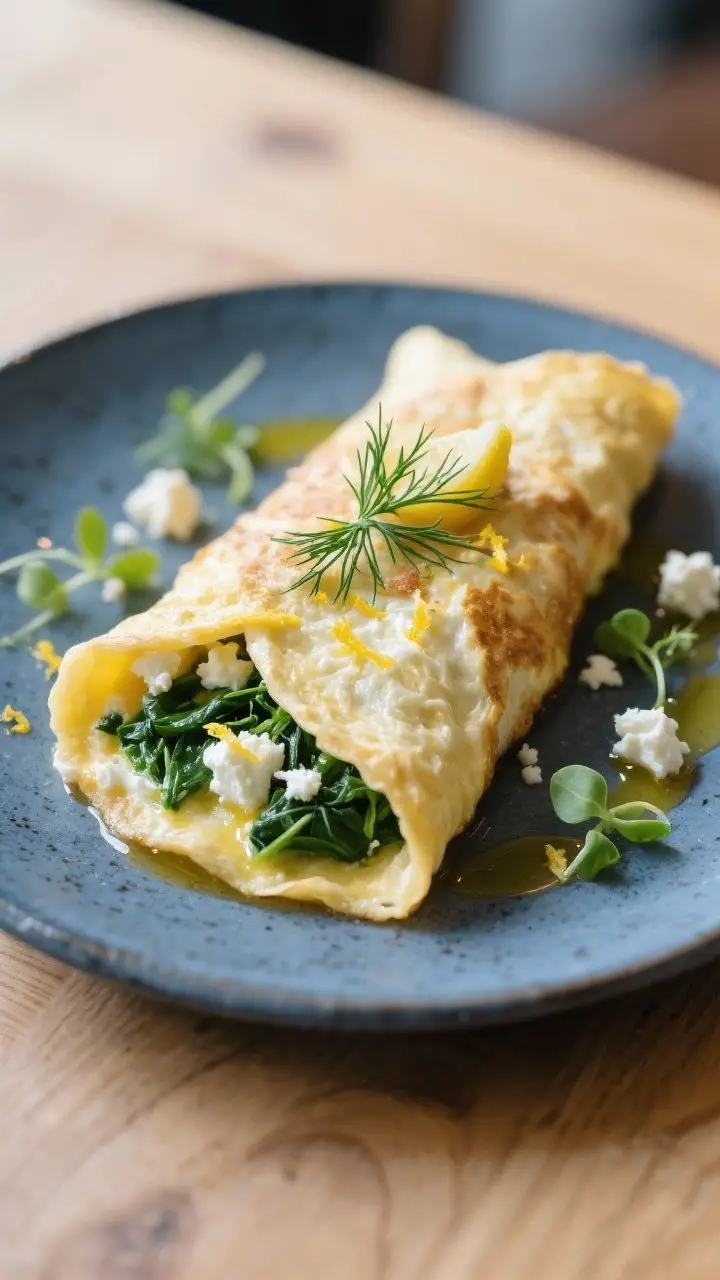
Benefits of This Recipe
- High protein, low effort: Cottage cheese boosts protein without frying your calorie budget.
- Creamy without cream: You get velvety texture minus heavy dairy or loads of butter.
- Customizable: Works with herbs, smoked fish, ham, or whatever random veggie is lurking in your crisper.
- Budget-friendly: Eggs + cottage cheese = affordable nutrition.
Your wallet can relax.
- Beginner-proof: Even if your fold is messy, it still tastes pro-level. Perfection is optional.
Common Mistakes to Avoid
- Overcooking: High heat turns eggs rubbery and curds squeaky. Medium to low heat is your friend.
- Skipping pre-cook on veggies: Waterlogged fillings will sabotage texture and flavor.
- Too much filling: Keep it light so the omelette folds cleanly and cooks evenly.
- Under-seasoning: Eggs love salt.
Taste your fillings and season the eggs properly.
- Wrong pan: Use a nonstick skillet, 8–10 inches. Stainless is heroic, but today’s not that battle.
Alternatives
- Greek twist: Add dill, spinach, and feta. Finish with lemon zest.
- Smoked salmon brunch: Chives, capers, and a squeeze of lemon.
Skip extra salt—salmon’s got you.
- Southwest style: Jalapeños, sautéed peppers, cheddar, and a dash of hot sauce. Cilantro if you’re team cilantro.
- Veggie-forward: Mushrooms, caramelized onions, and thyme. A drizzle of balsamic glaze?
Chef’s kiss.
- Low-lactose: Use lactose-free cottage cheese or swap half the cottage cheese with silken tofu for a similar creaminess.
- Keto boost: Add bacon or ham and a sprinkle of shredded cheese. Still light, still legit.
FAQ
Can I use low-fat or fat-free cottage cheese?
Yes. Low-fat works great and still gives you creaminess.
Fat-free is fine but can be a touch watery—just cook gently and avoid watery fillings to compensate.
Do I need to blend the cottage cheese first?
No. If you like a smoother texture, you can pulse it quickly in a blender. Otherwise, leaving the curds intact gives lovely creamy pockets throughout the omelette.
What’s the best pan size for 2–3 eggs?
An 8-inch nonstick skillet is perfect for 2 eggs; 10-inch for 3 eggs.
Too large and the omelette spreads thin and dries out; too small and it’s hard to fold.
How do I keep the omelette from browning?
Use medium-low heat, don’t rush, and cover briefly to help set the top without scorching the bottom. Browning isn’t a crime, but pale yellow equals tender texture.
Can I make this dairy-free?
You can swap cottage cheese with blended silken tofu plus a pinch of nutritional yeast and lemon juice. It won’t be identical, but it delivers similar creaminess and protein vibes.
Is this good for weight loss?
It can be.
High-protein, satiating, and customizable with low-cal veggies makes it easy to stay full. Just go light on added cheese and oils if calories are your priority.
Can I meal-prep a batch?
Cooked omelettes don’t reheat perfectly, but they’re still decent within 48 hours. Better strategy: prep fillings and the egg-cottage mix in advance, then cook fresh in minutes.
What herbs work best?
Chives, dill, parsley, and basil are top-tier.
Tarragon adds a subtle anise note that’s surprisingly elegant. Fresh beats dried here, FYI.
How do I add more flavor without more calories?
Use acids and aromatics: lemon zest, fresh herbs, garlic powder, smoked paprika, or a dash of hot sauce. Tiny tweaks, big payoff.
Can I make it into a scramble instead?
Absolutely.
Skip the fold and gently scramble the egg and cottage cheese mixture with your fillings. Same flavor profile, zero pressure.
Final Thoughts
This Cottage Cheese Omelette is the kind of breakfast that makes you feel like you’ve got your life together—even on a Tuesday. It’s quick, nutrient-dense, and flexible enough to suit whatever’s in your fridge or on your calendar.
Master the low heat, keep the fillings balanced, and you’ll get creamy, fluffy perfection every time. Simple move, big upgrade. Your future self will send a thank-you note.

